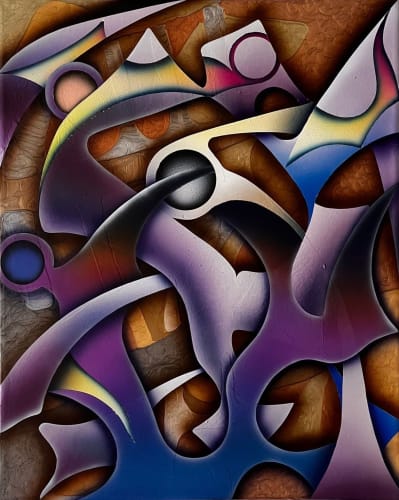Harm Gerdes' painterly practice unfolds at the intersection of intuition and technique, where the boundaries of the medium are continuously redefined. He has developed a distinct visual language in which airbrushing, pouring, and marbling techniques coalesce into complex pictorial structures. His works oscillate between compositional control and procedural openness, between material density and immaculate precision. What may appear digital or industrial at first glance is, in fact, an exploration of the materiality and agency of paint.
Beneath this technical discipline lies a conceptual investigation into perception, meaning, and the ontology of the image. Gerdes generates moments of visual dissonance, where forms appear familiar yet resist identification. Each work thus functions as an autonomous agent, probing the interplay between matter, thought, and imagination.
Drawing on art history, philosophy, and psychology as well as on impressions from daily life, such as the chromatic resonance of Mediterranean light or the rhythms of the urban environment, Gerdes constructs a transhistorical and transcultural framework. He approaches painting as an open system, mediating between craft and concept, history and contemporaneity, rationality and intuition. In doing so, Gerdes positions painting as a field of perpetual becoming, a practice that remains grounded in tradition while embracing the fluid dynamics of material and thought.
